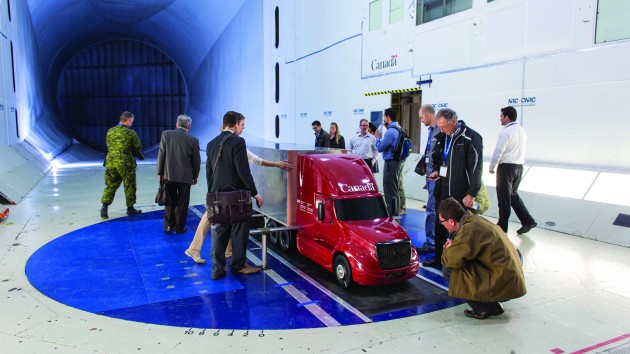NOx emissions rules to tap into Canadian research

OTTAWA, Ont. – Canada largely adopts vehicle emissions standards established in the U.S., but a future round of rules from the U.S. Environmental Protection Agency (EPA) will be drawing on some decidedly Canadian research.
About a year ago, Environment and Climate Change Canada (ECCC) performed tests on a medium-duty vehicle that had “an engine equipped with novel technology to reduce air-pollutant emissions”, an ECCC spokeswoman confirms. The related results are being cited as the U.S. EPA advances emissions standards under its Cleaner Trucks Initiative.
Details of what the “novel technology” included have not been released.
The upcoming round of standards to come through the EPA is expected to place a particular focus on NOx – particularly under low-load conditions when the vehicles are idling, moving slowly, or in stop-and-go traffic.
“EPA expects this study will inform our baseline engine performance for medium-heavy duty engines,” the U.S. regulator said when recently unveiling an Advanced Notice of Proposed Rule.
The full-vehicle testing by ECC’s Science and Technology Branch was completed at its emissions research lab in Ottawa, and developed by both agencies.
What the tests included
“The laboratory measurements were conducted using a chassis dynamometer to simulate the loads that the vehicle would experience over the road, and a full emissions sampling and analysis system to quantify the emission rates of various air pollutants,” an ECCC spokeswoman confirmed in a written response for trucknews.com.
“In addition, on-road measurements using a portable emissions measurement system (PEMS) was performed to acquire real world emissions data for comparison to the laboratory results. During all of these experiments, the exhaust emission rates of various pollutants were determined along with fuel consumption rates, exhaust temperatures, and other engine operating parameters.”
The results are still being analyzed.
This isn’t the first interaction between the two agencies, of course. The U.S. EPA and ECCC collaborate under a framework known as the Canada – United States Air Quality Agreement, aligning regulatory standards and compliance programs alike.
This particular project also involved Transport Canada’s ecoTechnology for Vehicles program, which evaluates different technologies for codes, standards and regulations. Collectively, they’re testing engines and aftertreatment systems in a “Canadian context”, the spokeswoman said.
“Additionally, emission measurement methods are being assessed and compared, including on-board sensors, standard laboratory devices, and portable emission measurement systems. ECCC is also working with the National Research Council of Canada to investigate air pollutant emissions during certain operating conditions which are especially important to Canada such as cold weather starting and extended engine idling.”
Have your say
This is a moderated forum. Comments will no longer be published unless they are accompanied by a first and last name and a verifiable email address. (Today's Trucking will not publish or share the email address.) Profane language and content deemed to be libelous, racist, or threatening in nature will not be published under any circumstances.